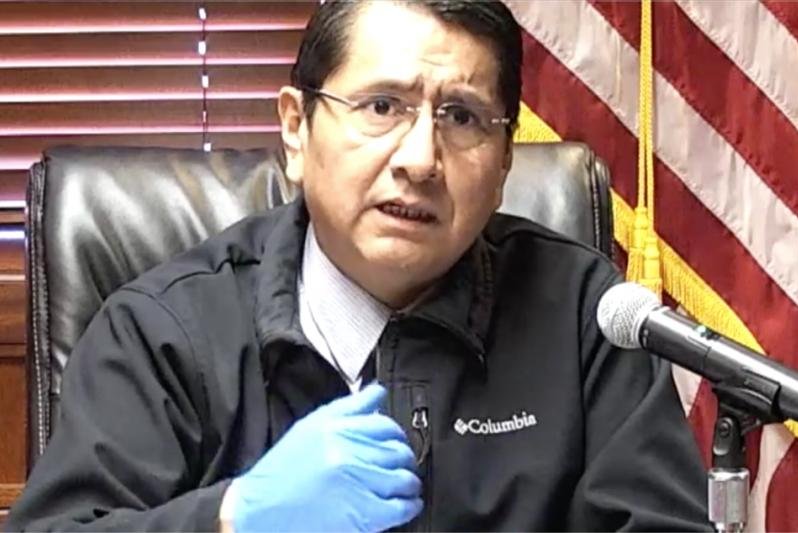1 of 2 | Navajo Nation President Jonathan Nez said Friday that numbers of reservation COVID-19 cases probably were higher than the health department reported because of a delay in obtaining test results. Photo courtesy of the Navajo Nation
April 6 (UPI) -- The COVID-19 pandemic is straining the medical capacity of poorer areas of Indian country in the southwestern United States following an early outbreak that has swept through the Navajo Nation reservation.
Health officials have reported that the Navajo Nation has the highest number of coronavirus cases among U.S. tribal entities, with 321 people testing positive and 13 confirmed deaths as of Saturday, according to tribal administration figures.
"When we test patients, we have to send the tests out to Phoenix and Albuquerque to be verified," Navajo Nation President Jonathan Nez said during an online town hall Friday. "We're probably three to four days behind."
After an early March church rally, the virus struck hard in rural parts of the reservation, which stretches across the Four Corners area in Arizona, New Mexico and Utah.
The reservation has slapped a nightly curfew on residents and closed itself off to tourists. Arizona National Guard and Federal Emergency Management Agency responders constructed a field hospital in one hard-hit area last week.
Police are maintaining checkpoints on the roads to enforce the curfew and will issue citations, officials said. Police Chief Philip Francisco said Sunday that some residents still are attending church services, going on non-essential shopping trips and ignoring the curfew, which runs from 8 p.m. to 5 a.m.
The Navajo Nation reservation is home to about 175,000 people, with about 40 percent of the population in remote rural areas without electricity or running water.
As the case numbers continue to grow, Roselyn Tso, area director of the Navajo Nation's Indian Health Service branch, said the agency is developing a surge plan for hospitals that might include using community centers and other public buildings for patients who are recuperating from the virus.
"Our people, doctors and nurses are burning out in the healthcare facilities," Tso said Friday.
The reservation has 13 Indian Health Service facilities, most of them clinics. About 170 total hospital beds, 50 isolation rooms and fewer than 30 ventilators are available for the entire population, a March report from the health service's Loretta Christensen said.
Navajo County, Ariz., where 137 cononavirus cases have been confirmed, appears to be the epicenter of the outbreak, reservation reports show. Next highest is Coconino County, Ariz., with 90 confirmed cases.
A March 7 rally at the Chilchinbeto Church of the Nazarene near Kayenta, Ariz., was attended by one COVID-19-positive patient, and attendees began to contract the virus in the following weeks, health officials said.
Emergency teams from Arizona National Guard and FEMA last week built a temporary 50-bed field hospital nearby in the small town of Chinle to expand capacity for patients.
At the Window Rock, Ariz.,-based Navajo Times, the tribe's 60-year-old weekly newspaper, Duane Beyal, editor-in-chief, says he's sure the cases are under-reported.
He said he worries that tribal case numbers will be inaccurate because many patients are receiving care at hospitals off the reservation.
"We're sure there have been more deaths," Beyal said. "We have reporters at the airstrips here and the pilots are telling us they're busy flying patients out to area hospitals. We know there's an undercount."
Readers with Internet connections are swarming the website for updates and to read stories such as how a family matriarch tested positive and how her daughters created a home isolation area, Beyal said.
"I'd say morale is actually pretty high," Beyal said. "Our people are used to being faced with these kinds of challenges, lack of services, lack of resources, lack of funding. It's an old familiar story to us. Most of our population are always isolated at home in the first place.
"Residents keep telling each other we've been through this before, we'll get through by helping each other, helping our elders and looking out for our children," Beyal said.
During Sunday's daily update shown on Facebook, Nez, told those watching, "We'll persevere through this. We must put our faith in our creator."















